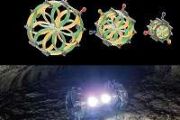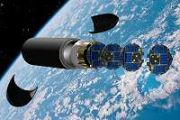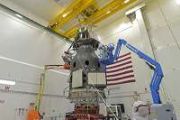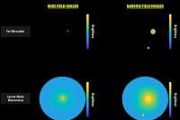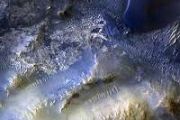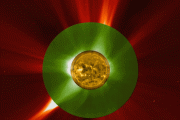
Copernical Team
Seeing farther into the universe with enhanced gravitational-wave detection
 Researchers at Louisiana State University have unveiled a promising method to refine gravitational-wave detection through optical spring tracking. This innovation may enable scientists to observe deeper into the cosmos and gather crucial insights into black hole and neutron star mergers.
Gravitational-wave observatories like the Advanced Laser Interferometer Gravitational-Wave Observatory
Researchers at Louisiana State University have unveiled a promising method to refine gravitational-wave detection through optical spring tracking. This innovation may enable scientists to observe deeper into the cosmos and gather crucial insights into black hole and neutron star mergers.
Gravitational-wave observatories like the Advanced Laser Interferometer Gravitational-Wave Observatory Astronomers uncover key clues to the formation of giant galaxies
 Astronomers are making significant progress in solving the mystery of how the universe's largest galaxies were formed, a puzzle that has intrigued scientists for decades.
A recent study by researchers from the University of Southampton, in collaboration with international experts, has pinpointed the birthplaces of massive elliptical galaxies. These findings provide valuable insights into t
Astronomers are making significant progress in solving the mystery of how the universe's largest galaxies were formed, a puzzle that has intrigued scientists for decades.
A recent study by researchers from the University of Southampton, in collaboration with international experts, has pinpointed the birthplaces of massive elliptical galaxies. These findings provide valuable insights into t SpaceX launch Wednesday marks record 24th flight of booster
This request seems a bit unusual, so we need to confirm that you're human. Please press and hold the button until it turns completely green. Thank you for your cooperation!
Press and hold the button
If you believe this is an error, please contact our support team.
185.132.36.159 : 7d26553d-ddd1-42ee-81c0-2f1ec024
Could we use an asteroid to shield astronauts on their way to Mars?
This request seems a bit unusual, so we need to confirm that you're human. Please press and hold the button until it turns completely green. Thank you for your cooperation!
Press and hold the button
If you believe this is an error, please contact our support team.
185.132.36.159 : ad99b555-5822-4ba6-a476-a4991e5b
European satellites launched to create artificial solar eclipses in a tech demo
This request seems a bit unusual, so we need to confirm that you're human. Please press and hold the button until it turns completely green. Thank you for your cooperation!
Press and hold the button
If you believe this is an error, please contact our support team.
185.132.36.159 : 3266fad4-8d5c-411e-8ae8-50a0bfe7
NASA's stuck astronauts hit 6 months in space. Just 2 more to go
This request seems a bit unusual, so we need to confirm that you're human. Please press and hold the button until it turns completely green. Thank you for your cooperation!
Press and hold the button
If you believe this is an error, please contact our support team.
185.132.36.159 : 1006f3c8-ad79-4c10-a110-e431a5c8
Europe's troubled Vega-C rocket to launch after delays
This request seems a bit unusual, so we need to confirm that you're human. Please press and hold the button until it turns completely green. Thank you for your cooperation!
Press and hold the button
If you believe this is an error, please contact our support team.
185.132.36.159 : be11582b-abe1-409a-ae88-258b7bdf
SpaceX satellite launch from Kennedy Space Center tops off three launches in 30 hours
This request seems a bit unusual, so we need to confirm that you're human. Please press and hold the button until it turns completely green. Thank you for your cooperation!
Press and hold the button
If you believe this is an error, please contact our support team.
185.132.36.159 : 46141b52-e5ce-425e-970b-b31be932
Space station trajectory data now available
This request seems a bit unusual, so we need to confirm that you're human. Please press and hold the button until it turns completely green. Thank you for your cooperation!
Press and hold the button
If you believe this is an error, please contact our support team.
185.132.36.159 : 25a612cf-e6ad-4c0a-9289-05850e82
Radar mission takes to the skies
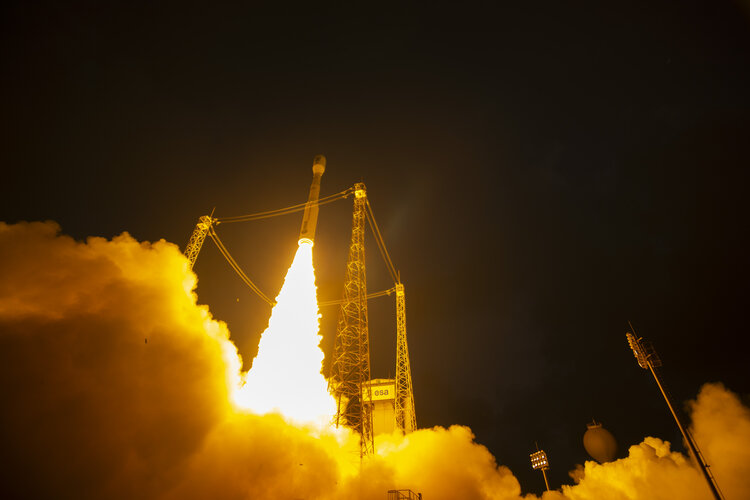 Image:
Radar mission takes to the skies
Image:
Radar mission takes to the skies 







